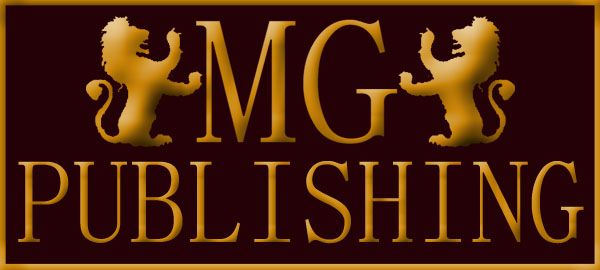

WRITING BASICS FOR NEW AUTHORS
A. Before you start, you must decide on tense (when is your story) and person (who it's about).
TENSE:
PAST TENSE: the most common – tells the story like you are relating what has already happened.
PRESENT TENSE: less common – implies the story is happening now. Often used by screen
writers and authors who want to involve their readers in the story – not as easy to write in.
FUTURE TENSE: rare – tells a story that will happen. This is the hardet to pull off successfully.
The choice is yours, but make it and stick to it! Mixing tenses can confuse the reader: example:
Mixed tense: "He went to the store, saw a bully and runs home."
Use this instead: "He went to the store, saw a bully and ran home."
Or this: "He goes to the store, sees a bully and runs home."
While the examples are sentences, tense needs to be consistant through your whole story.
PERSON:
THIRD PERSON: the most common – tells about someone else.
FIRST PERSON: also common – tells about you; you're telling the reader about yourself.
SECOND PERSON: rare – telling a story about your reader; difficult to do well.
This one is not as strict as tense: If you are writing first person, it's OK to include others (third
person) in your story. However, if you're Joe writing about yourself, switching from "I" to "Joe" or
back will confuse most readers.
B. The next consideration is how long your story should be. The short answer is:
"Long enough to tell the whole story."
However, the publishing industry goes by a series of "standard" story sizes:
Micro-Fiction – up to 100 words, used as short fills in magazines.
Flash Fiction – 100 to 1000 words, often found in glossy magazines.
Short Story – 1000 to 7500 words, used in magazines and collections.
Novellette – 7500 to 20000 words, not well liked by print publishers.
Novella – 20000 to 50000 words, good size for on-line fiction or short non-fiction.
Novel – 50000 to 110,000 words, good size for print books; over 80000 words preferred.
Epics and Sequels – 110,000 words and up, not popular with publishers and bookstores.
A more thorough discussion of this can be found at
www.fictionfactor.com/articles/ .
.
Don't let this cramp your style, but be aware of your options in this regard.
The above is one area in which we plan to offer advice only, not direct help.
There are others who specialize in ghost writing.
C. OK, you've written your masterpiece. Do you need to copyright it?
If you are writing for fun and don't care what others do with it, you don't have to. You can still
publish to try to reach more people, but may lose control of your story.
If you are writing to make money, copyright your work so others can't legally use it for free.
If you want to make more money having it made into a film or TV show, copyright!
If you want a piece of any spin-offs (dolls, posters, T-shirts, etc.), copyright!
If you just want to have a legal right to say what happens to your story, copyright!
Copyrights may be obtained on line for single works by single authors in the US at the online
 .
.
Or if you prefer, you may contact us by the or
or
 for technical help.
for technical help.
You should call a copyright lawyer for legal help if you feel you need it.
D. Proofread your work or have it done. "Minor" errors can distract your readers from your story.
Even if you are writing in a non-standard style – such as "pirate speech" or "newly arrived
foreigner" – you need to follow the rules of that style. See our page.
page.
E. The above items are the most important. We will be adding more in the order of importance
as the entries are finished.
For more advice on writing, see our  page.
page.
Use our (← Click here! →) or
(← Click here! →) or

to ask or tell us anything.
TENSE:
PAST TENSE: the most common – tells the story like you are relating what has already happened.
PRESENT TENSE: less common – implies the story is happening now. Often used by screen
writers and authors who want to involve their readers in the story – not as easy to write in.
FUTURE TENSE: rare – tells a story that will happen. This is the hardet to pull off successfully.
The choice is yours, but make it and stick to it! Mixing tenses can confuse the reader: example:
Mixed tense: "He went to the store, saw a bully and runs home."
Use this instead: "He went to the store, saw a bully and ran home."
Or this: "He goes to the store, sees a bully and runs home."
While the examples are sentences, tense needs to be consistant through your whole story.
PERSON:
THIRD PERSON: the most common – tells about someone else.
FIRST PERSON: also common – tells about you; you're telling the reader about yourself.
SECOND PERSON: rare – telling a story about your reader; difficult to do well.
This one is not as strict as tense: If you are writing first person, it's OK to include others (third
person) in your story. However, if you're Joe writing about yourself, switching from "I" to "Joe" or
back will confuse most readers.
B. The next consideration is how long your story should be. The short answer is:
"Long enough to tell the whole story."
However, the publishing industry goes by a series of "standard" story sizes:
Micro-Fiction – up to 100 words, used as short fills in magazines.
Flash Fiction – 100 to 1000 words, often found in glossy magazines.
Short Story – 1000 to 7500 words, used in magazines and collections.
Novellette – 7500 to 20000 words, not well liked by print publishers.
Novella – 20000 to 50000 words, good size for on-line fiction or short non-fiction.
Novel – 50000 to 110,000 words, good size for print books; over 80000 words preferred.
Epics and Sequels – 110,000 words and up, not popular with publishers and bookstores.
A more thorough discussion of this can be found at
www.fictionfactor.com/articles/
Don't let this cramp your style, but be aware of your options in this regard.
There are others who specialize in ghost writing.
C. OK, you've written your masterpiece. Do you need to copyright it?
If you are writing for fun and don't care what others do with it, you don't have to. You can still
publish to try to reach more people, but may lose control of your story.
If you are writing to make money, copyright your work so others can't legally use it for free.
If you want to make more money having it made into a film or TV show, copyright!
If you want a piece of any spin-offs (dolls, posters, T-shirts, etc.), copyright!
If you just want to have a legal right to say what happens to your story, copyright!
Copyrights may be obtained on line for single works by single authors in the US at the online
 .
.Or if you prefer, you may contact us by the
 or
or
 for technical help.
for technical help.You should call a copyright lawyer for legal help if you feel you need it.
D. Proofread your work or have it done. "Minor" errors can distract your readers from your story.
Even if you are writing in a non-standard style – such as "pirate speech" or "newly arrived
foreigner" – you need to follow the rules of that style. See our
 page.
page.E. The above items are the most important. We will be adding more in the order of importance
as the entries are finished.
 page.
page.Use our
 (← Click here! →) or
(← Click here! →) or

to ask or tell us anything.





